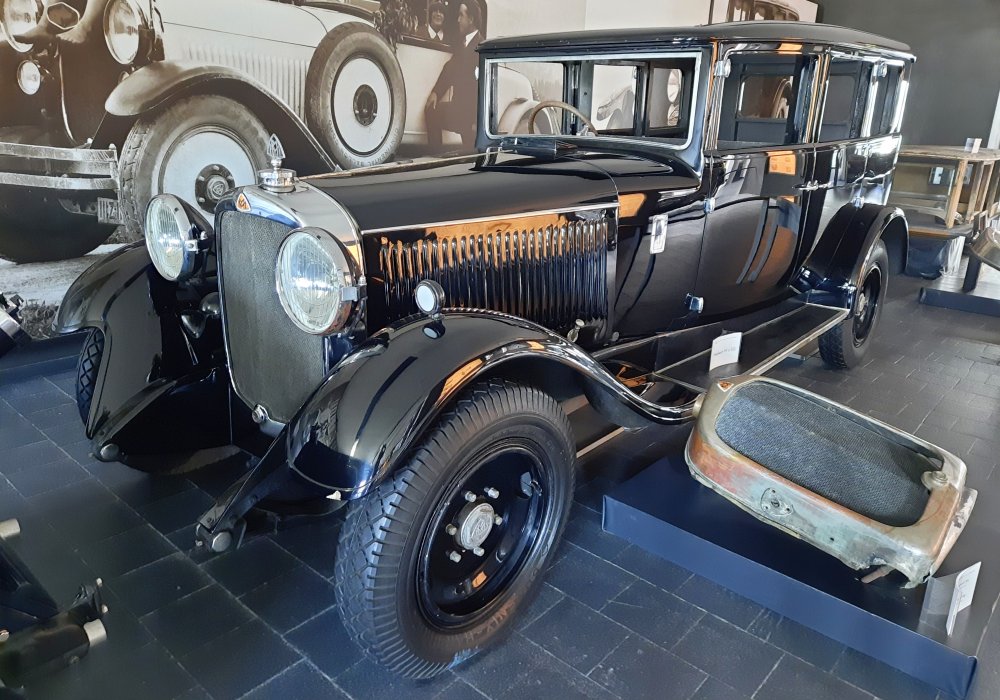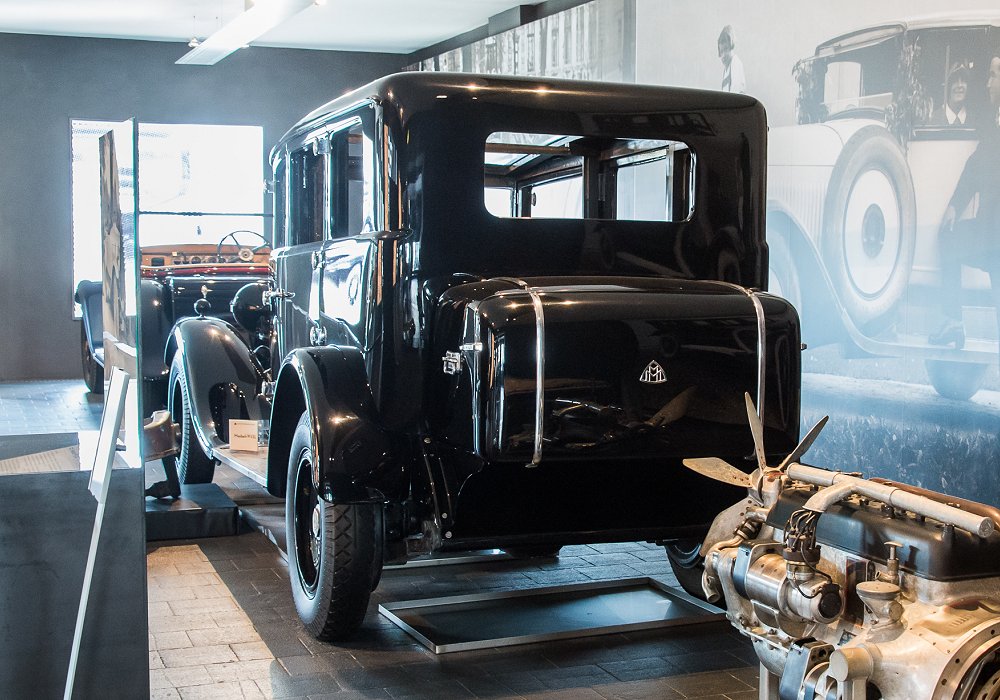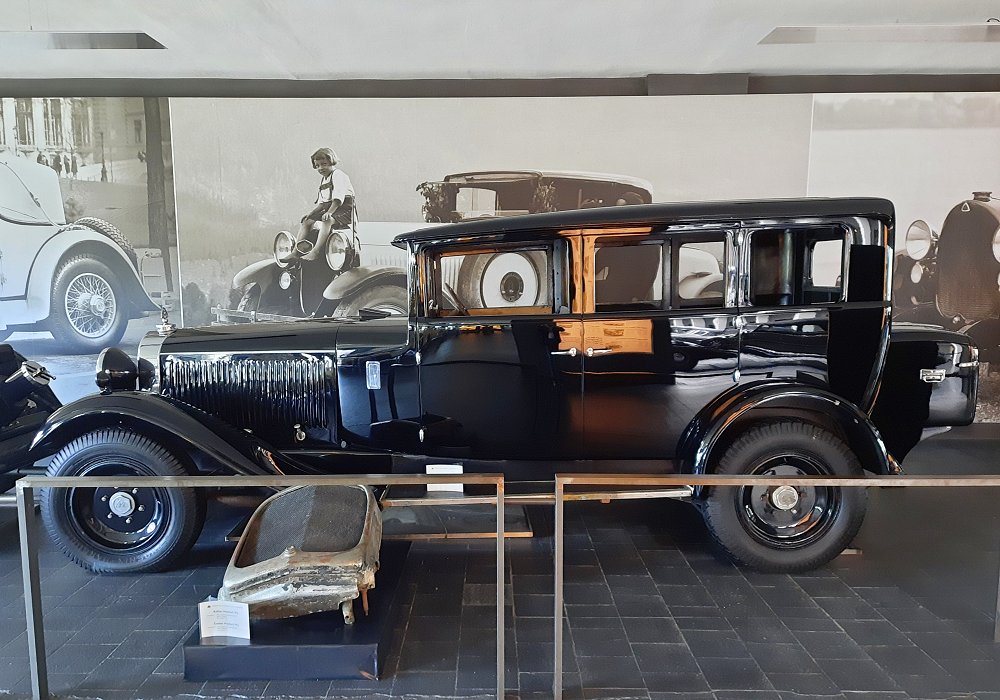Description
The Maybach W 5, introduced in 1926, was one of the most significant early luxury automobiles produced by Maybach, marking the moment when the company transitioned from building engines for aircraft and railcars to creating some of the most advanced and prestigious passenger cars of the interwar period. The W 5 embodied Maybach’s engineering-first philosophy: refined mechanical sophistication, exceptional smoothness and a level of build quality that positioned the marque at the very top of the European luxury market.
The car was powered by Maybach’s own 7.0-litre straight-six engine, an imposing and beautifully engineered unit that demonstrated the company’s background in precision powerplants. Producing around 120 horsepower, it delivered immense torque and a remarkably smooth running character, even by luxury standards of the day. The engine’s refinement came from its large displacement, carefully balanced internals and a design lineage that traced directly back to Maybach’s aero-engine expertise. The W 5 could maintain high cruising speeds with little effort, offering quiet, unstrained performance that set it apart from other luxury cars of the era.
One of the W 5’s most innovative features was its transmission. Early versions used a four-speed gearbox, but in 1927 Maybach introduced the revolutionary “Maybach-Wandler” system, a dual-range gearbox combined with a torque converter — an early form of semi-automatic transmission. This setup allowed drivers to shift without using the clutch in certain modes and provided a level of smoothness rare for the 1920s. It made the W 5 easier to drive than many of its contemporaries and reinforced the car’s emphasis on effortless luxury rather than sporting performance.
The chassis was built on a strong, ladder-type steel frame designed to carry large-bodied luxury coachwork. Suspension used semi-elliptic leaf springs at both ends, tuned for comfort and stability. Maybach collaborated closely with high-end coachbuilders, offering the W 5 as a chassis-only model so customers could commission custom bodies. As a result, surviving examples display an impressive diversity of designs, including formal limousines, elegant touring cars, imposing cabriolets and chauffeur-driven town cars, all executed with exquisite craftsmanship.
On the road, the W 5 delivered exactly what wealthy clients expected from a top-tier luxury car. Its long wheelbase and robust chassis provided a dignified, smooth ride over the rougher road surfaces of the 1920s. The straight-six engine offered a rich, deep exhaust note and superb flexibility, allowing the car to pull cleanly from very low speeds. The newly introduced Wandler transmission broadened the car’s appeal by making it more relaxing to drive in traffic or during long-distance touring.
The interior of the W 5 depended largely on coachbuilder and customer preference, but most examples featured sumptuous materials such as fine leather, polished exotic woods, plush carpeting and detailed metalwork. Instruments were typically mounted centrally and produced with the precision expected of a company with Maybach’s engineering pedigree. Many cars were fitted with advanced electrical equipment, interior heaters, intercom systems and elaborate passenger comfort options, reflecting the sophisticated clientele the car served.
The W 5 played a crucial role in establishing Maybach’s reputation. It proved that the company could compete with and even exceed the standards set by the finest European marques, including Mercedes, Hispano-Suiza, Isotta Fraschini and Rolls-Royce. The model’s success laid the foundation for later and even more luxurious models such as the W 6 and the famed Zeppelin series.
Although production numbers were modest due to the car’s exceptionally high price and bespoke nature, the W 5 remains a landmark in prewar luxury engineering. Its advanced drivetrain, smooth straight-six engine and impeccable craftsmanship represent the height of German prestige motoring during the Weimar era. Surviving examples are rare, highly prized and considered among the most historically important Maybach vehicles.
The Maybach W 5 stands today as a symbol of early twentieth-century luxury, technical ambition and uncompromising engineering — a car that helped define Maybach’s identity long before the modern revival of the marque.



